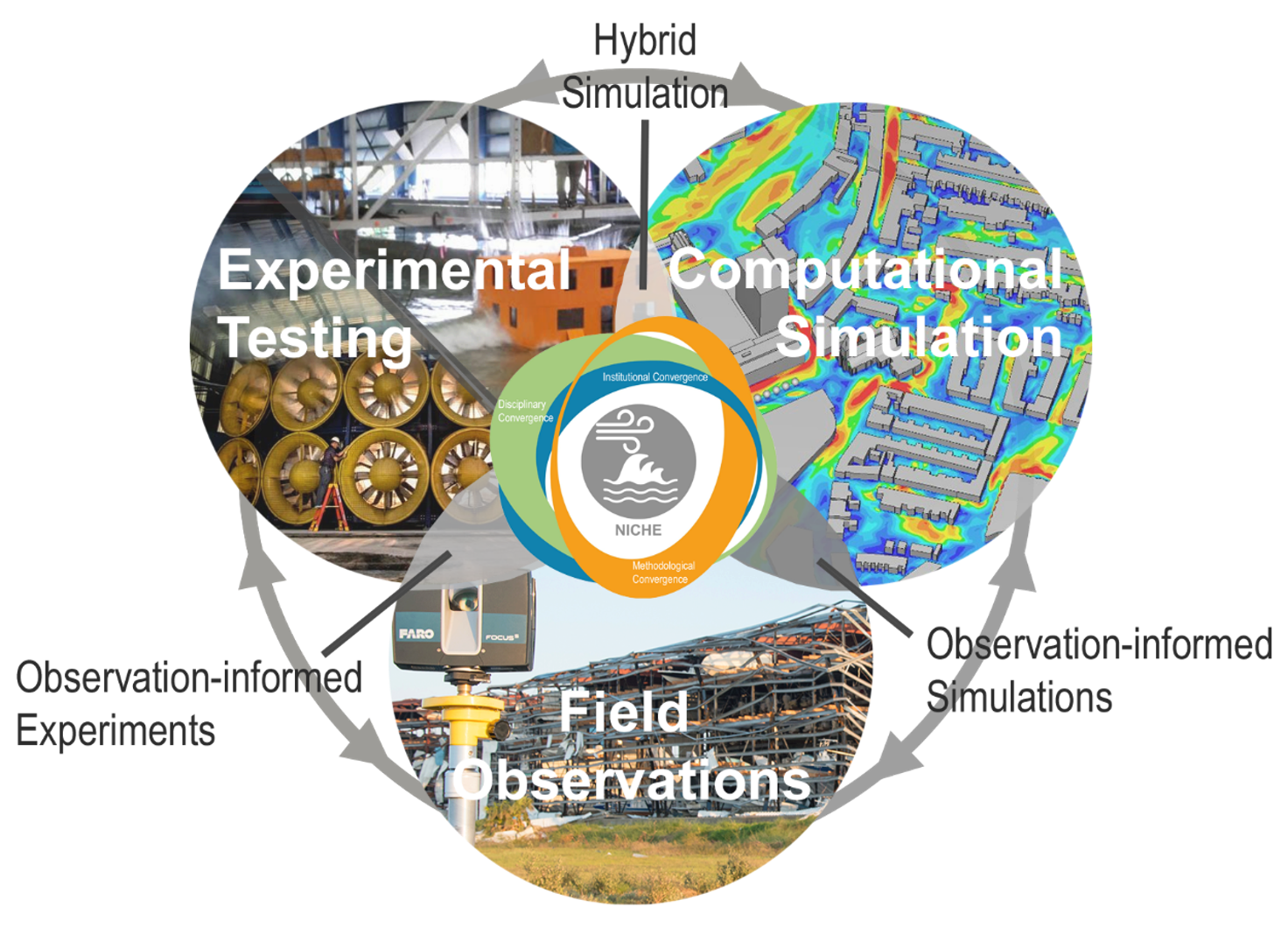NICHE
Research Opportunities
The future NICHE will deliver a national full-scale testing facility capable of generating wind speeds of up to 200 miles per hour, combined with a water basin to simulate storm surge and wave action. NICHE will have unique capabilities relative to those currently available to the research community in terms of size, power, or scope, fulfilling community-expressed needs. NICHEs integrated capabilities will enable simulation of extreme event conditions in a controlled laboratory environment large enough to test:
- a full-size two-story building to systematically study and document failure
- infrastructure systems (e.g., transportation, power, communication) using full-scale sub-systems and large-scale aero/hydro elastic models
- major structures (e.g., tall structures, long-span roofs, stadiums) at larger scales
- entire communities at reduced geometric scales
The future NICHE will position current and next-generation US-based investigators to remain leaders in the globally competitive field of natural hazards engineering research. Examples of research topics that will be enabled by NICHE include the following:
- Validation of rational engineering analyses, enhanced (performance-based) building codes and standards, innovative new designs, and retrofitting/mitigation techniques;
- Development and validation of computational models (ranging from high-fidelity CFD to reduced-order or data-driven models) of multi-phase flows (e.g., wind-water-soil) and their interaction with the built and natural environments, including quantification of uncertainties in the model predictions;
- Simultaneous loading (wind or wind + waves) + capacity (strength) assessment of full-scale buildings/subassemblies/components up to failure;
- Effect of bi-directional correlated loadings of wind and waves on buildings and large-scale structures, including offshore wind turbines;
- Wind-water-soil interactions and their effects on foundations of civil structures (e.g., potential erosion in tower foundations);
- Flutter in loose membrane flood barriers under wind-wave loads;
- Performance of natural and nature-based systems to mitigate surge and wave effects on beaches and coastal environments;
- Bio-inspired structures and bio-inspired mitigation innovations;
- Debris dynamics for wind and wave conditions;
- Aeolian erosion and sediment transport and effects of morphological changes;
- Deterioration of infrastructure performance under aging and concurrent and sequential loadings effects;
- Functionality of shelter-in-place structures that may become the new normal due to pandemic-related societal change and/or short-notice evacuation orders in dense coastal areas;
- Multi-hazard fragility functions and probabilistic risk modeling of communities as system-of-systems under coupled hazard modalities (e.g., wind, rain, debris, surge/waves);
- Testing of geometrically scaled models of entire communities for explorations of community/regional-scale hazard modeling, air quality modeling, wind energy viability, urban planning, debris transport, evacuation optimization;
- Identification of new lines of inquiry or research needs revealed by novel investigations at the interfaces between hazards, disciplines, and methodologies.






